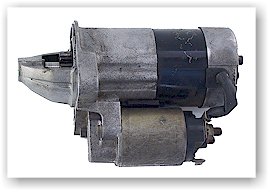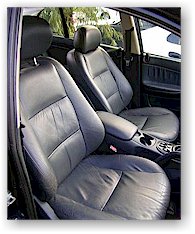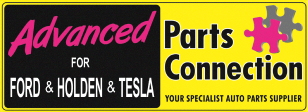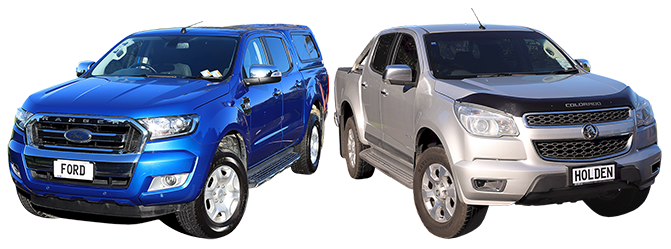Environmental

Blowing the Myth that the Car Wrecking Industry is Environmentally Unfriendly
The Benefits in Recycling Vehicle Parts
Here at Advanced for Ford & Holden it is not uncommon for us to find vehicle parts that we have sold years before turning up on vehicles that we have purchased for dismantling. We can tell this as we can see the part reference number marked on the part.
 We previously had a case where a starter motor had come back to us on three different Ford vehicles over time, only to see the starter motor checked by us and off again to do a stint on yet another Ford Telstar.
We previously had a case where a starter motor had come back to us on three different Ford vehicles over time, only to see the starter motor checked by us and off again to do a stint on yet another Ford Telstar.
We think this is the ultimate in recycling and this example is not uncommon.
These parts can then be resold, rebuilt or even if their life is over, scraped and the metals reformed into other useful products.
World wide, about 75% of dismantled vehicles, once all useable parts are removed, are shredded to recover the iron and steel content. The ferrous metal is magnetically split; the remaining 25% is comprised of other non-ferrous metals like copper, aluminum, rubber and a mixture of plastics.
Below are some of the benefits of recycling the not-so-obvious, miscellaneous vehicle parts.
Recycling vehicles and their parts saves an estimated 85 million barrels of oil a year.
Vehicle Parts
1. Brake Pads
- Today’s brake pads and shoes are a mixture of synthetic materials and copper. Since 1998, the use of copper in automobile brake pads has increased greatly. Most brake pads can contain up to 30% copper.
- Recycling will mean less mining for raw materials, this can lead to dust and waste gases such as sulfur dioxide that have harmful effects on our environment.
- Recycling saves landfill space.
- Recycling uses far less energy than needed in manufacturing new parts. This energy savings leads to the conservation of valuable reserves like oil, gas and coal. This reduces the amount of CO2 released into the atmosphere.

2. Auto Glass
- The glass in vehicles can pose a problem for recycling.
- Automobile Shredder Residue contains between 15 to 20 percent of glass originating from windshields, side windows and other vehicle glass, most of which is not normally recovered and can end up in landfills.
- The addition of polymer makes windshields a contaminant to recycled container glass, and few companies have the technology to remove the inner plastic layer. It is best recycled in non-container applications like asphalt, landscape materials and artificial sand.
- Recycling glass reduces related air pollution and related water pollution.
- Automotive glass should be removed if in good condition, stored and reused.
3. Vehicle Accessories
- Our vehicles would feel strange without accessories like floor mats, seat covers, sound systems and wheel rims.
- Thanks to advances in technology, everything from floor mats and instrument panels to upholstery, aluminum and steel can be recycled for use in new automobiles.
4. Environmental Benefits of Recycling Accessories
- Recycling conserves resources such as oil, steel and aluminum, the base materials for many vehicle accessories.
- Reduces greenhouse gas emissions caused by the manufacturing of new products from raw materials.
- Recycling conserves energy: Recycling one half of a kilo of steel saves enough energy to power a 60-watt light bulb for almost 40 hours.
- Recycling vehicles and their parts saves an estimated 85 million barrels of oil a year.

Automobiles are currently one of the most recycled commodities. The average vehicle is made up of about 65% steel. In America alone the steel industry recycles more than 14 million tons of steel from end-of-life vehicles annually.
Even fluids such as oils or greases, and coolants and refrigerants from the air-conditioning units may be re-used by the recyclers or sold to a licensed facility for re-use.
Tyres can be re-sold; some are removed to stockpiles for later recycling. Recycled tyre rubber is part of many end products that contain rubber components.
There are three major steps taken when we recycle vehicle parts.
Step One – Drainage and Removal of Fluids
- Preparing the vehicle for dismantling is vital to proper recycling.
- Fluids must be drained and correctly disposed of, or sent for refining.
- Petrol is drained out, and the gas tank removed; to be used for resale or recycled metal.
- The average vehicle contains nearly 20 liters of operating fluids.
- Any dangerous chemicals require special handling.
- The wheels and tyres are also removed and resold or recycled at this stage.
Step Two- Parts Removal for Re-Use
- Many parts, depending on the age and condition, can be sold or rebuilt for re-use.
- The vehicle is dismantled and the re-sale parts are identified.
- Recycling vehicle parts decreases the need for the manufacture of new parts.
- Some examples of re-use parts are; suspension parts, body panels, wheels, glass, electrical parts, transmissions, engines and many other useful parts.
Step Three- Materials Recovery/ Recycling of Materials
- Once the fluids and reusable items are removed, the car can be crushed.
- The flattened hulk will be shipped to a shredder that will shred the car in a matter of minutes into small handfuls of recyclable metals.
- There are three main types of metals that are magnetically separated, iron, steel, and non-ferrous metal such as aluminum and copper.
- The Auto Shredder Residue (ASR) is the non-metallic material and composed of rubber, plastic, glass, foam, and electrical wiring.
- This is why it is vital to ensure that all hazardous materials are removed prior to this step in the process.
- The largest markets for scrap metals and steel are currently found in India and China.
Dismantling is sustainable, here’s why:
Why don't you consider using a used part first?
By doing so you are making a wise environmental choice.

The very act of recycling automotive parts from wrecked or dismantled vehicles is a great step in limiting the continual use of resources and energy in the manufacturing of new vehicle parts from the worlds limited raw materials. This also eliminates the need to ship new parts across the oceans to New Zealand wasting fuel and energy.
Besides that, most used vehicle parts will cost you less than new parts and perform the same function.
It is truly amazing just how much of the vehicle can be recycled, nearly everything can be re-used.
In our operation here at Advanced for Ford & Holden, oils and other fluids are drained and sent to the appropriate recycling or refining company, tyres can be sold, engines, transmissions, electrical parts, panels and all good parts can be tested, cleaned and re-sold in New Zealand or even exported to other countries.
Once all usable parts are removed car bodies are crushed and sent to the steel mill where they are melted down and recycled into other usable products.
As a Parts Connection member we are very aware of our responsibility to protect our precious environment and each member is keen to work hard to the Parts Connection code of conduct. This among other things is there to create a safe environmentally friendly vehicle dismantling practice.




